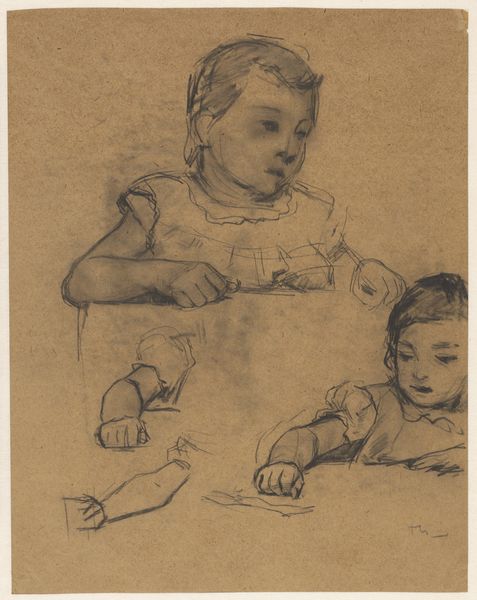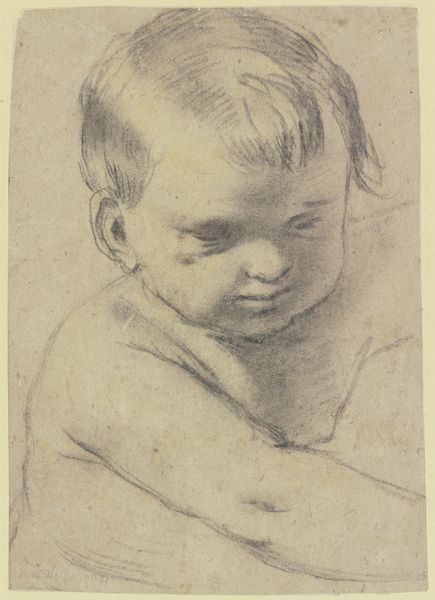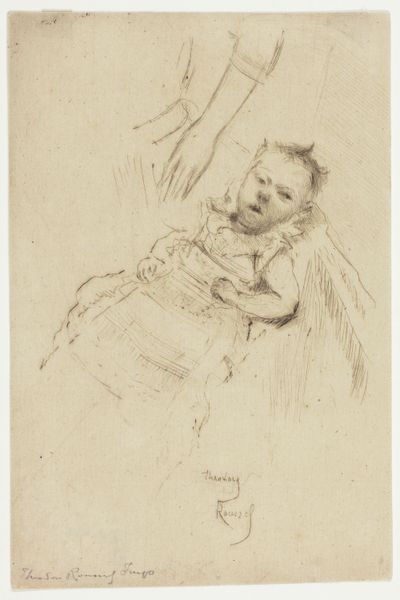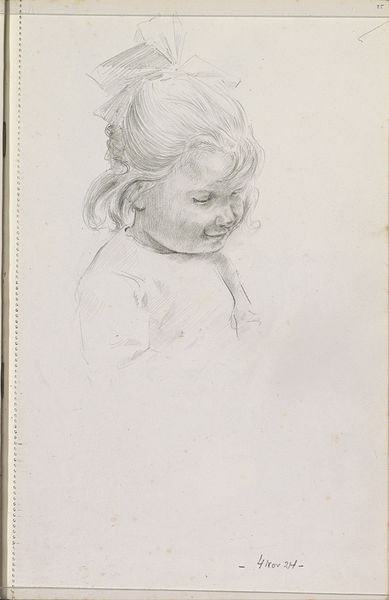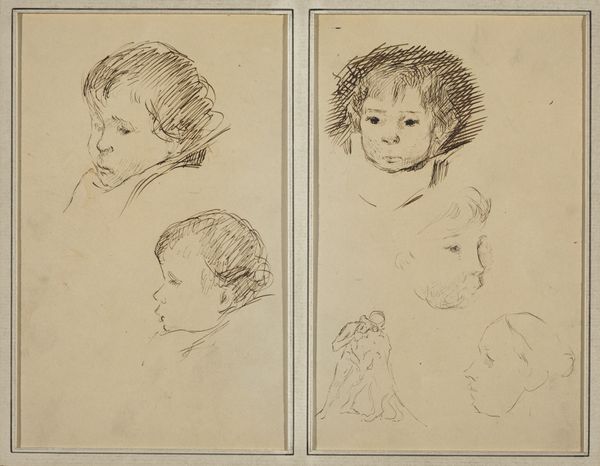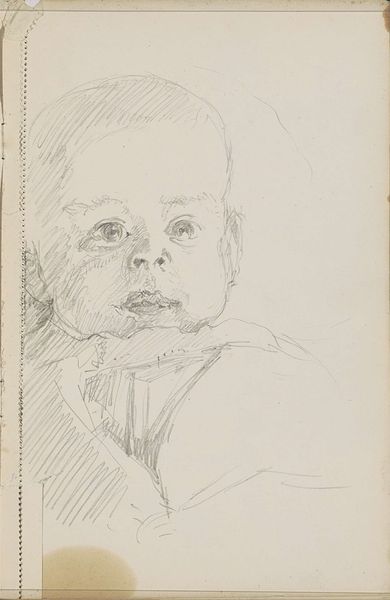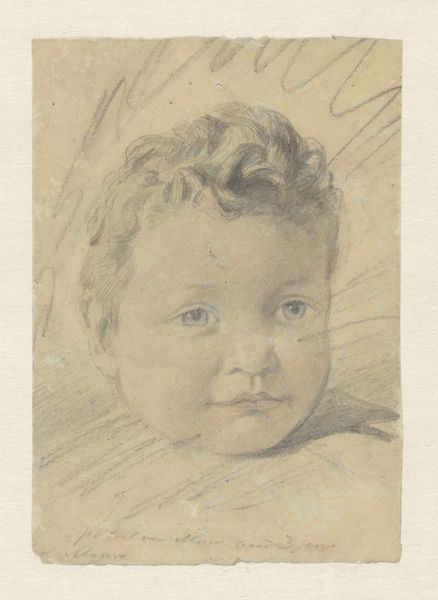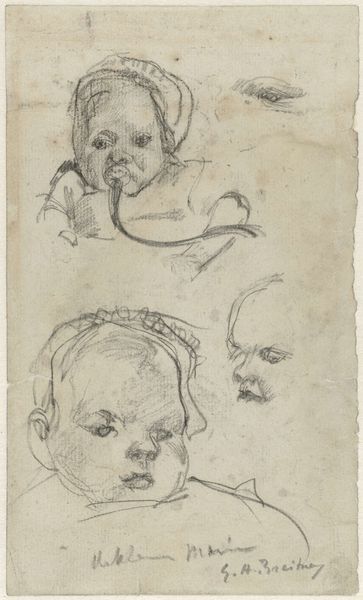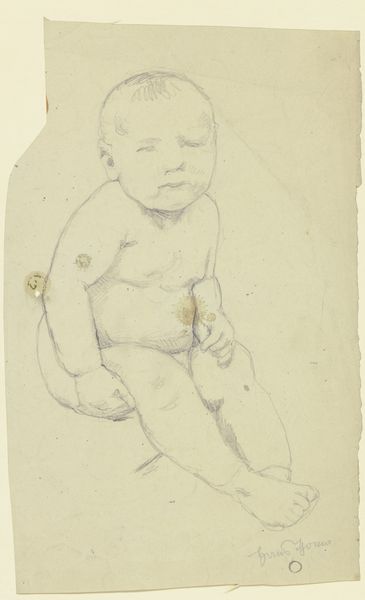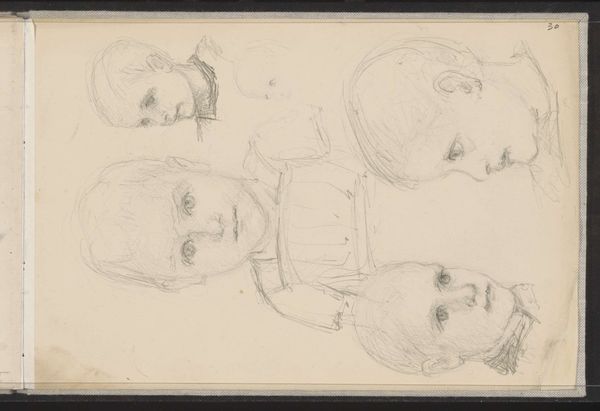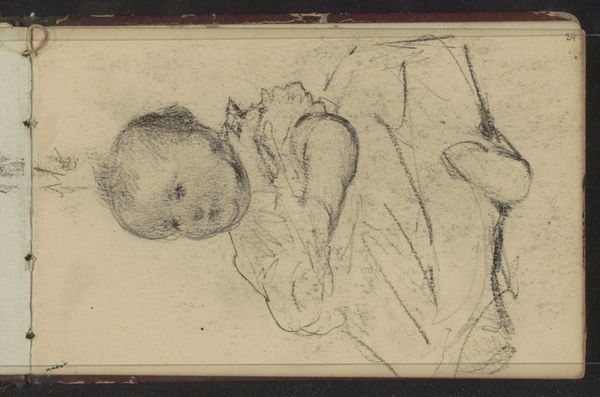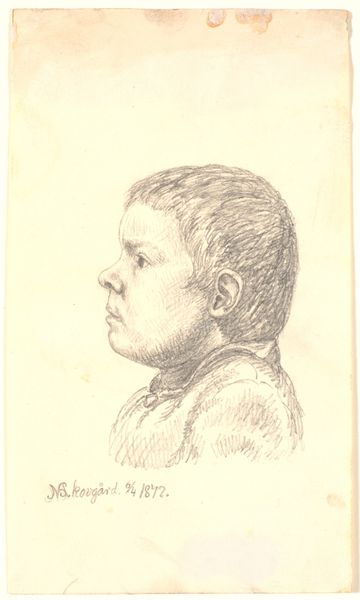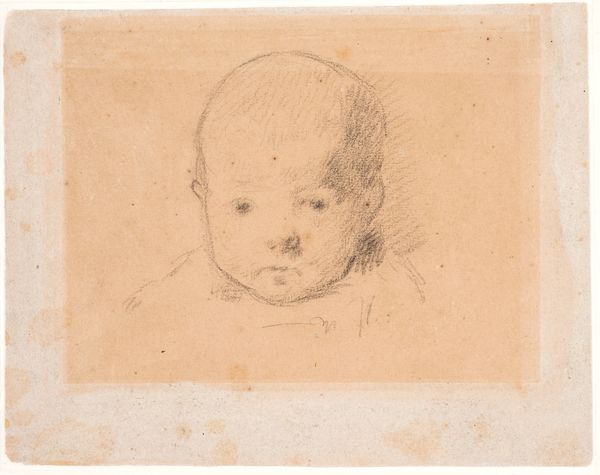
drawing, charcoal
#
portrait
#
drawing
#
facial expression drawing
#
light pencil work
#
pencil sketch
#
charcoal drawing
#
portrait reference
#
child
#
pencil drawing
#
expressionism
#
animal drawing portrait
#
portrait drawing
#
facial study
#
pencil work
#
charcoal
Copyright: Rijks Museum: Open Domain
Editor: This is "Laughing Child in a Cradle and a Head of a Child" by Otto Verhagen, created around 1917-1919. It appears to be a charcoal and pencil drawing on paper. The sketch-like quality creates a sense of intimacy, almost like glimpsing a private moment. What stands out to you in terms of composition? Curator: The immediate observation lies within the contrasting handling of line and form. Note the assured contour defining the head, set against the frenetic, almost scribbled lines of the cradle scene. Verhagen establishes a visual hierarchy through this contrast, inviting us to prioritize the psychological study of the single head. Editor: That's interesting. So, the clarity of the head suggests a deeper focus? Curator: Precisely. The formal elements guide our reading. Consider also the negative space surrounding the head – it isolates the subject, amplifying its presence. The cradle scene, by comparison, feels less resolved, serving perhaps as a contextual backdrop rather than a focal point. Does that interpretation resonate with you? Editor: It does. The upper portrait seems so much more substantial and weighty than the rest of the work. What do you make of the repetition of the same subject? Curator: Repetition introduces an element of formal experimentation. It is an exercise in exploring different modes of representation, juxtaposing careful observation with a more impulsive, gestural approach. It also hints to the passage of time. One could also argue that this piece, therefore, suggests both vulnerability and strength of the maternal bond, fixed, by subject, expression, and framing. Editor: I hadn’t considered it that way, but analyzing the formal components really clarifies the intention behind the drawing. Curator: Indeed. Formal analysis allows us to decode the artist’s choices and construct a deeper understanding of their visual language. Editor: Thank you! This really deepened my understanding of this artist's working method and priorities.
Comments
No comments
Be the first to comment and join the conversation on the ultimate creative platform.
